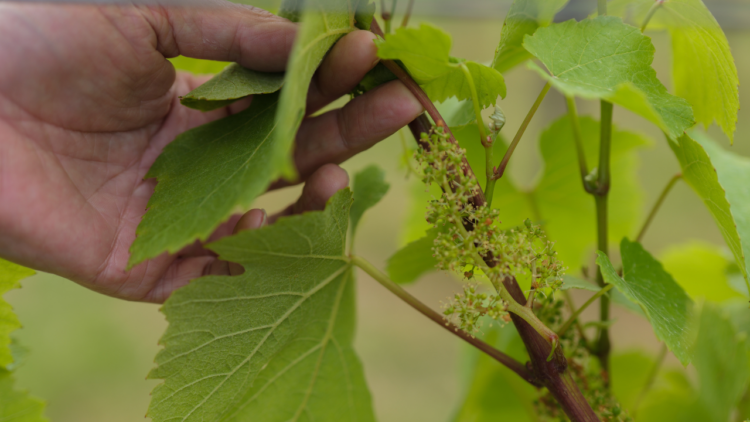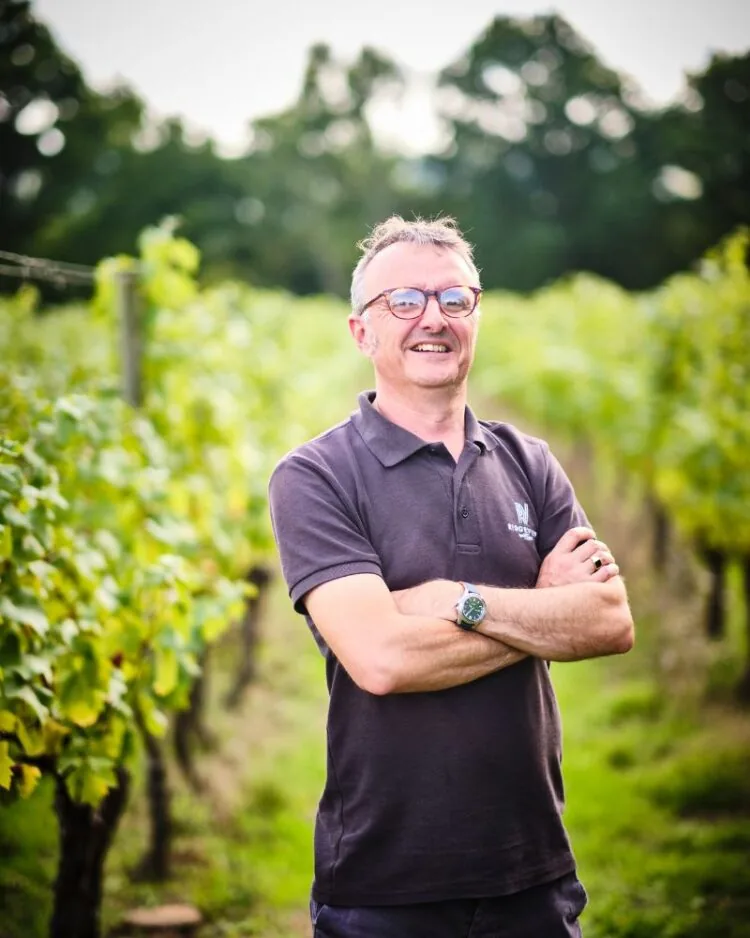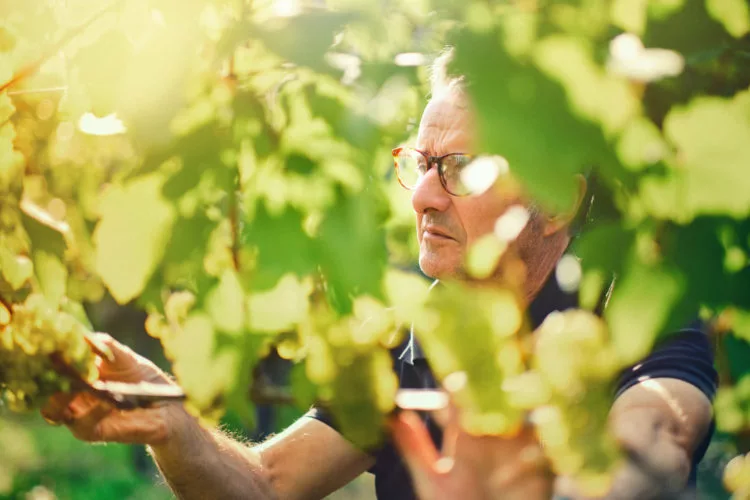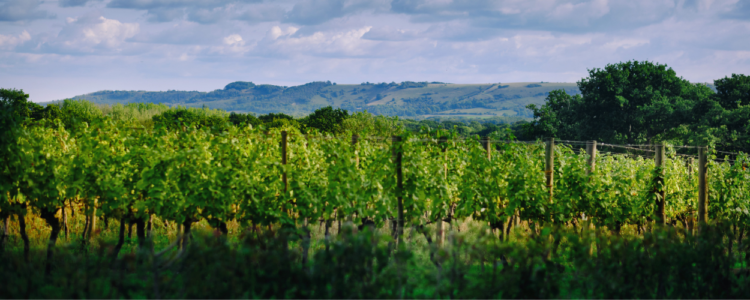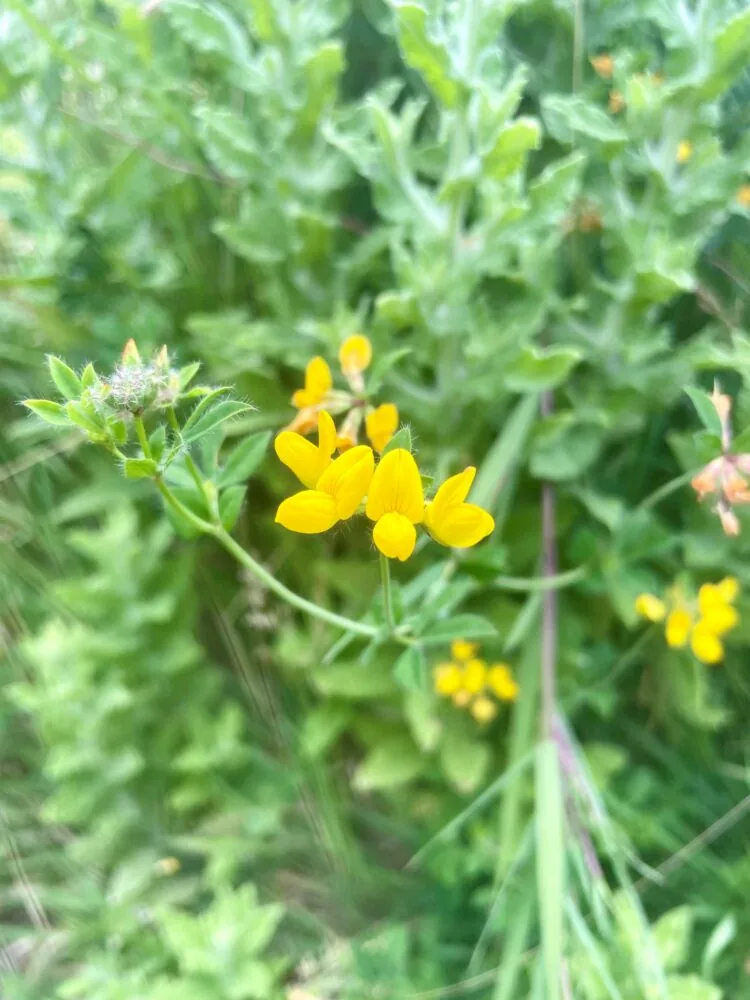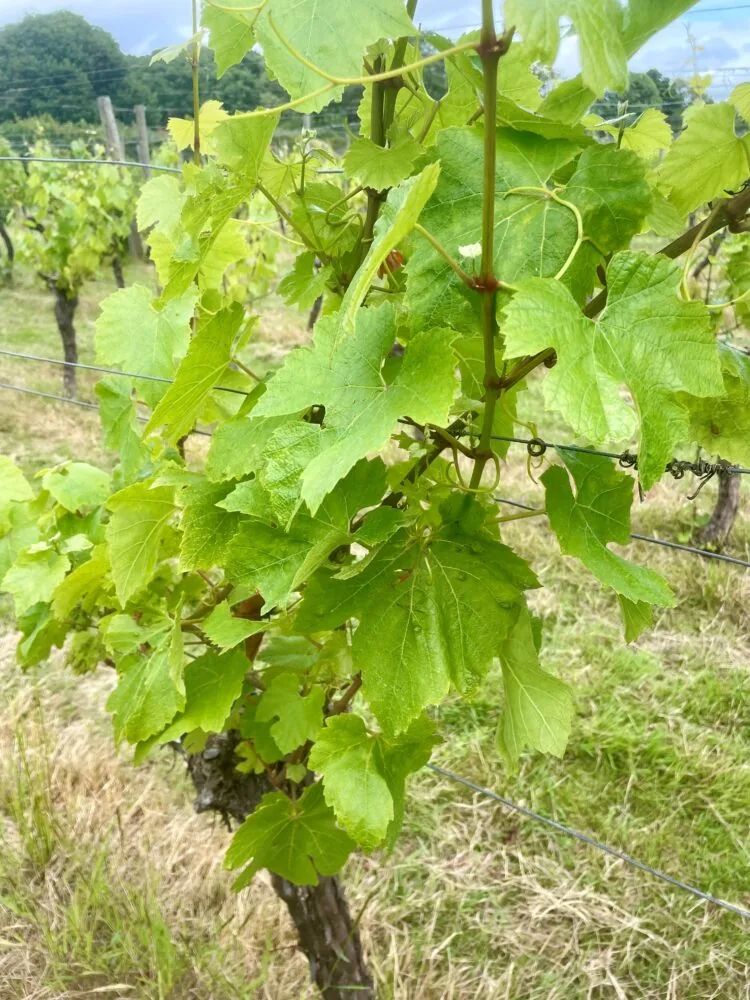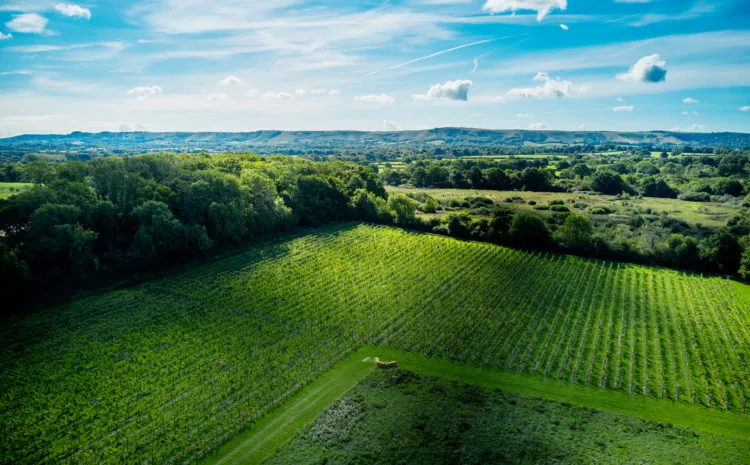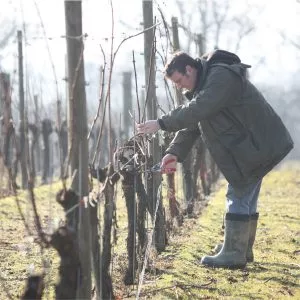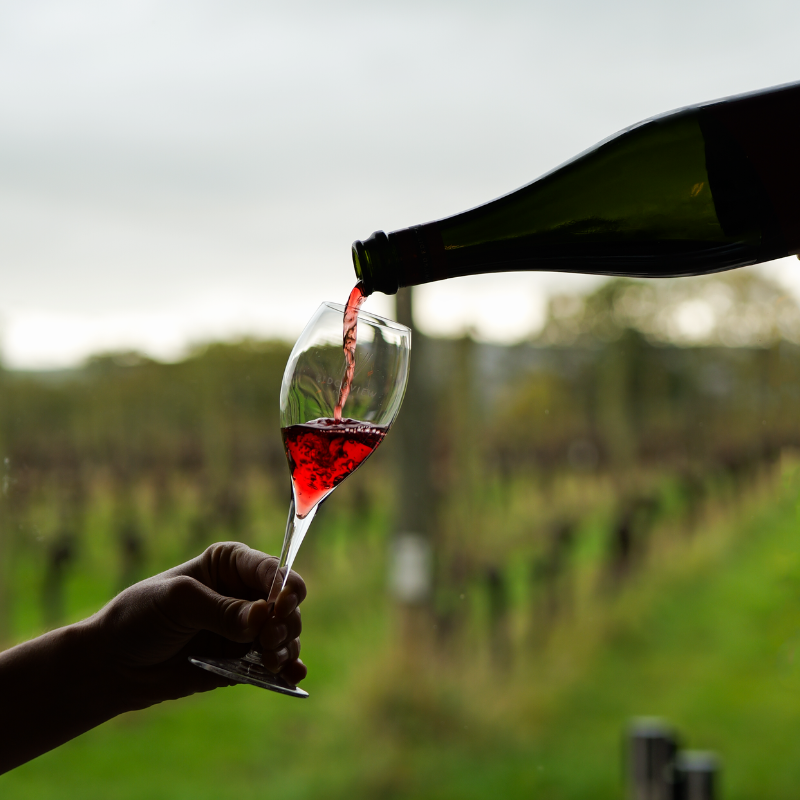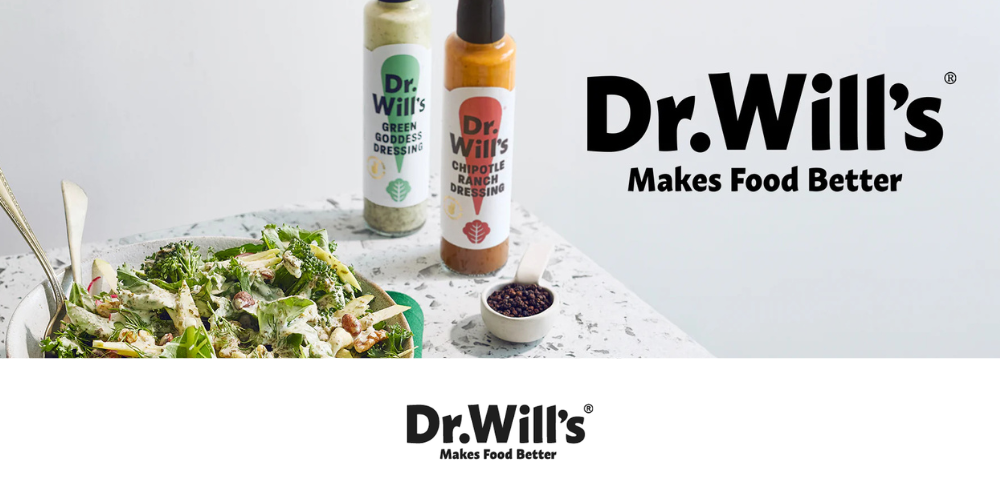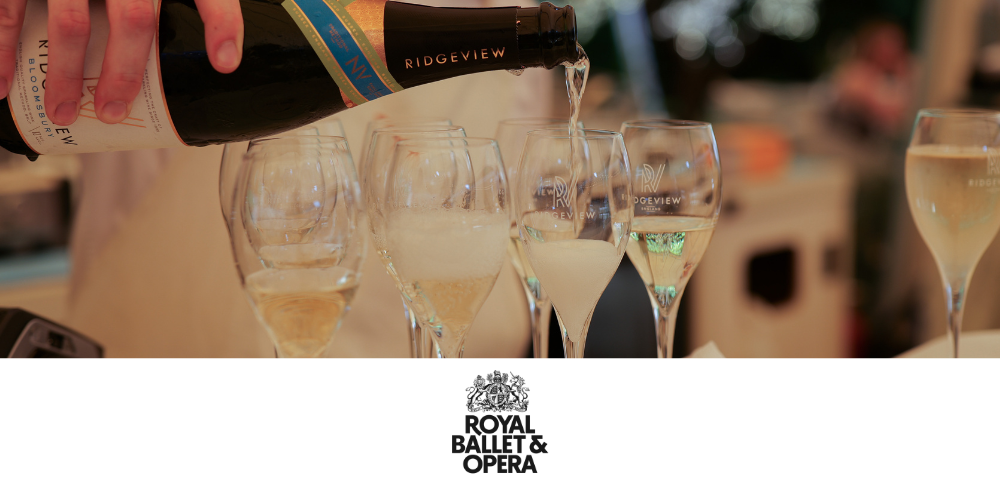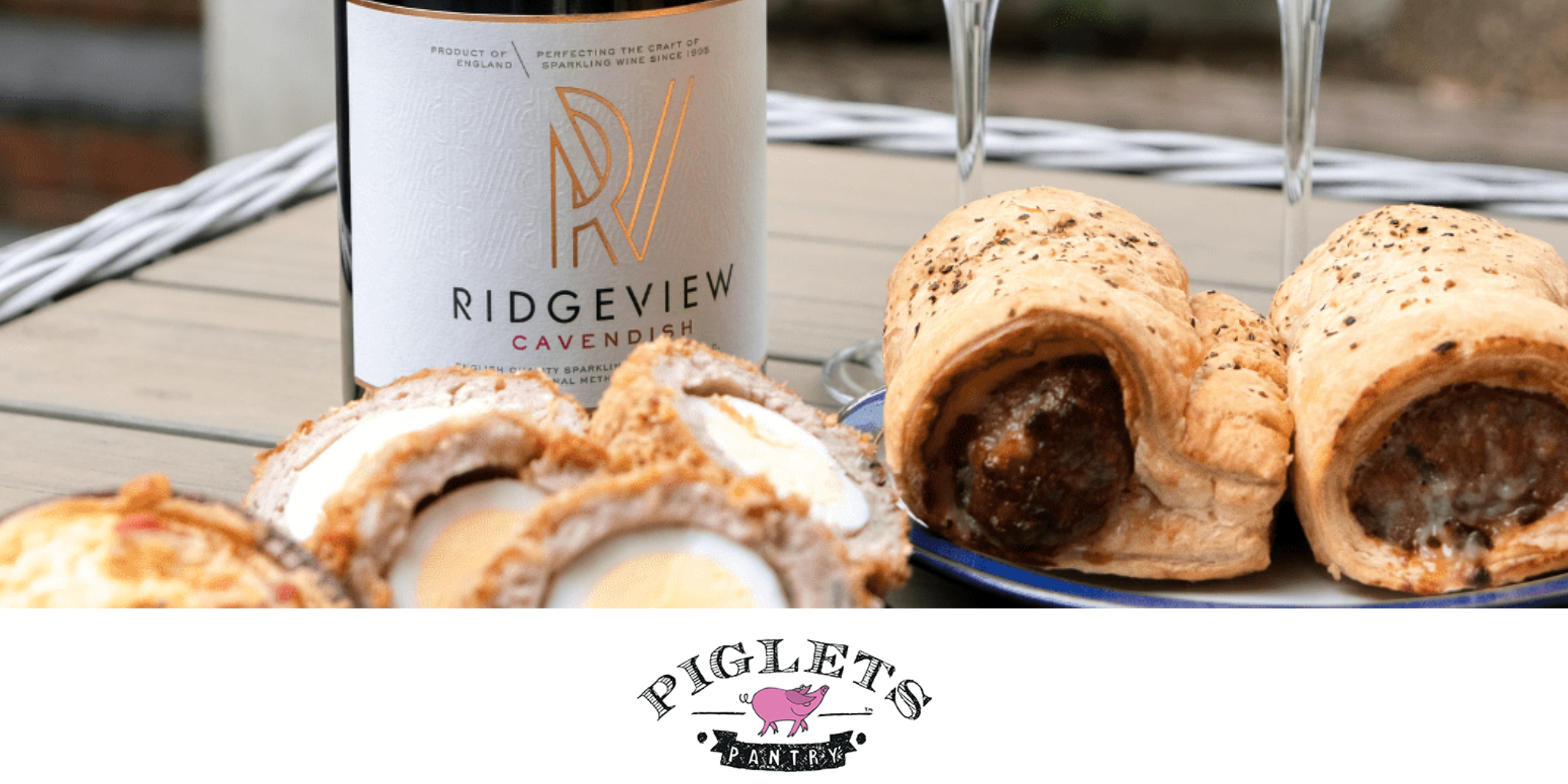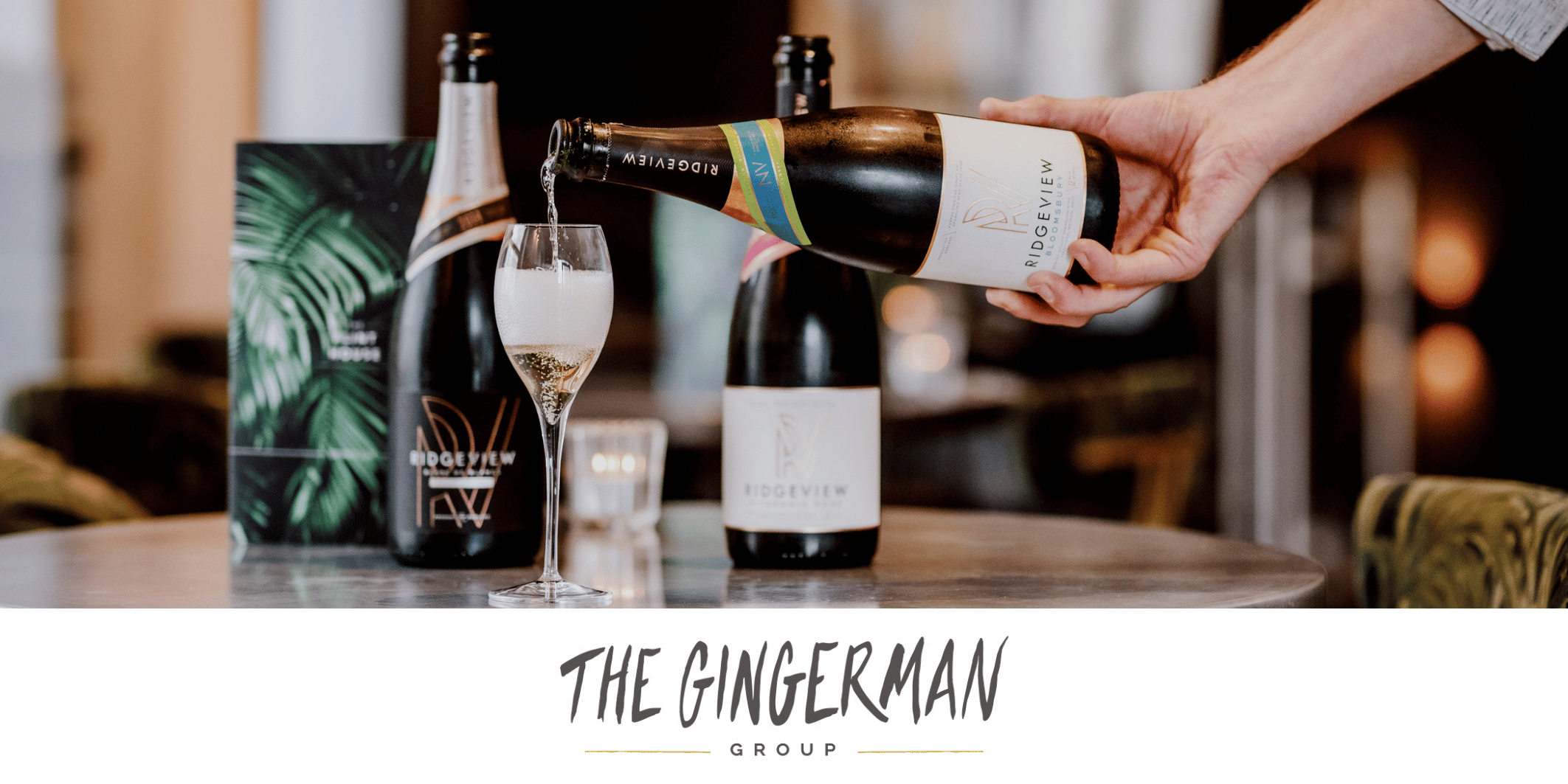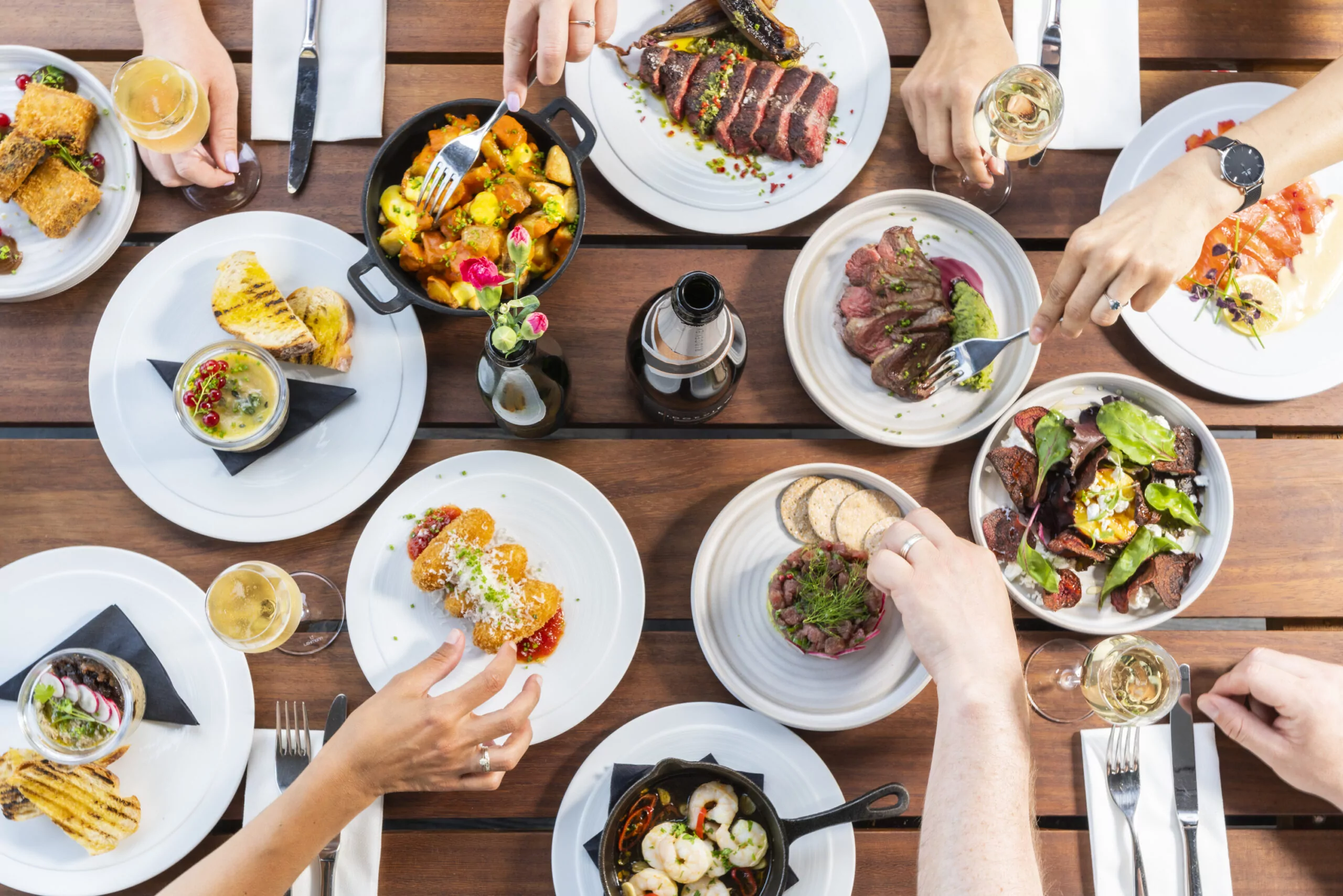Improving soil health
A healthy sustainable vineyard is rooted in healthy sustainable soils. Given the age of our vines and our commitment to taking the best care of our land, this is another long-term measure Matt is paying particularly close attention to. He talks of “setting a roadmap” for our soil, with the goal of increasing vine longevity and vigour, as well as fruit quality.
“We keep working with Marco to get the top part of the vines sorted, and now the focus is very much on soil health. Something that became apparent last year is: where we’ve got better soil in patches of the vineyard, there’s a real difference in the canopy, the colour of the leaves. Also less disease pressure. The vines were a lot healthier.”
Fortunately, the composition of our soils gives us a good medium to work with – perhaps the best, according to a recent conversation Matt had with Professor Alain Deloir from L’Institut Agro in Montpelier.
“We got chatting about soil types when we were guest speakers at a pruning festival in Tuscany. Alain is probably the world expert on vine physiology and he said that, if you know what you’re doing with it, clay can be a fantastic growing medium for vines.”


